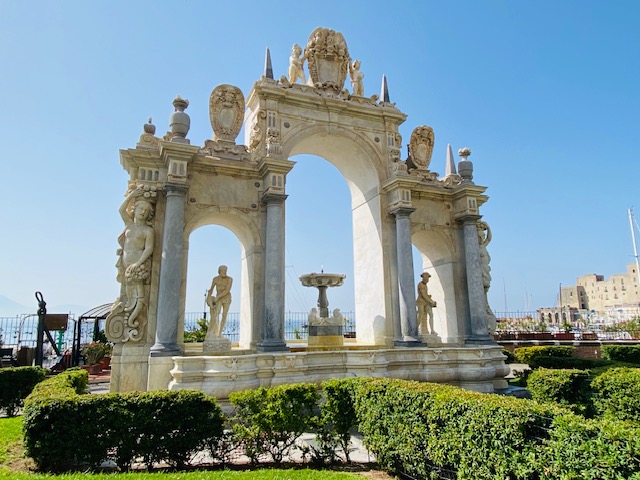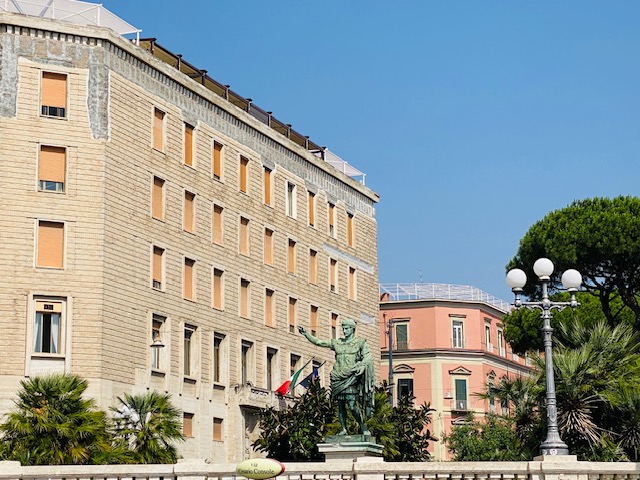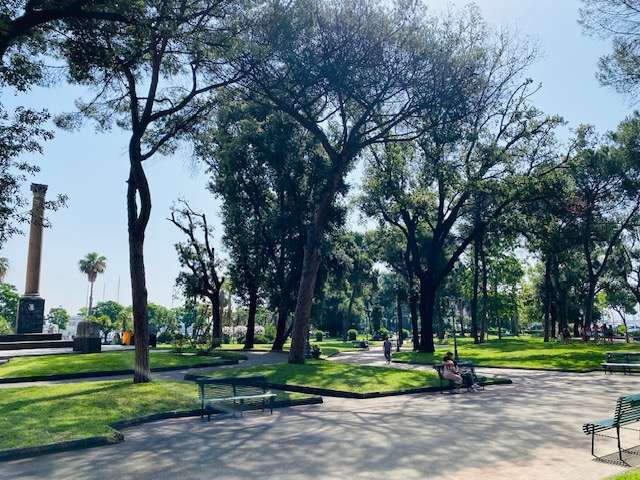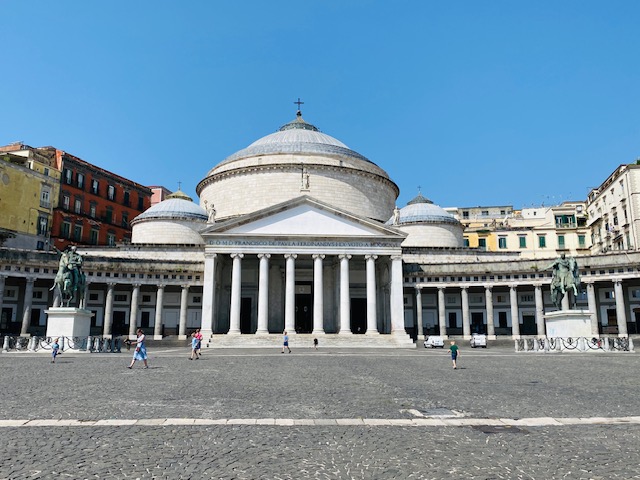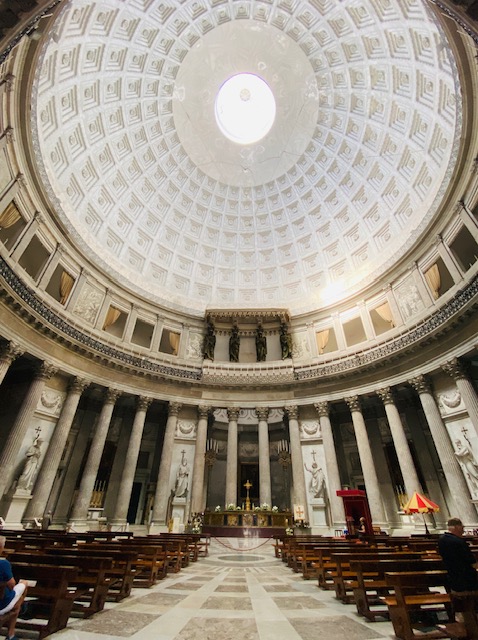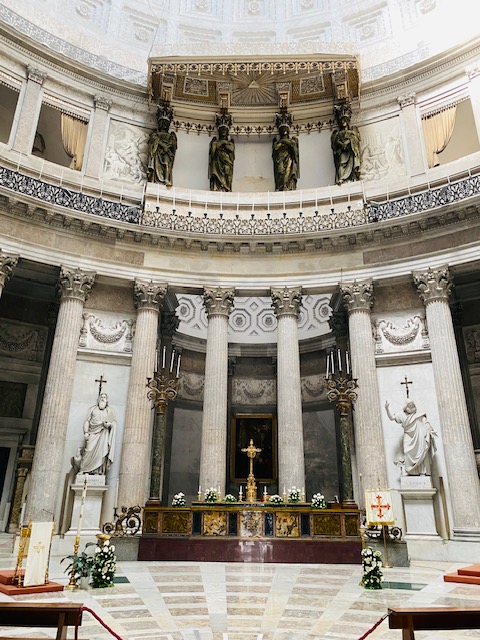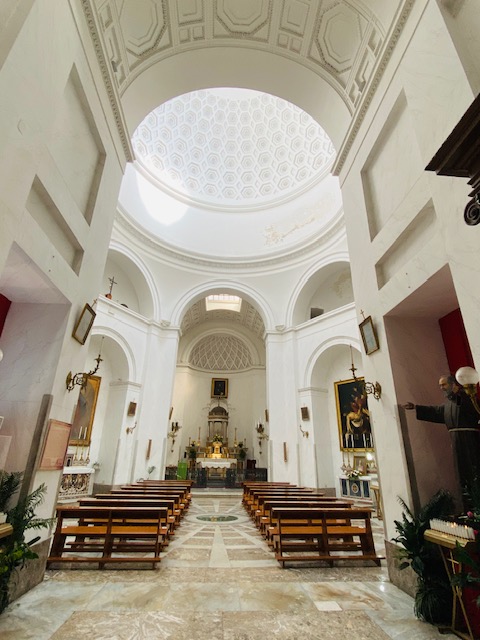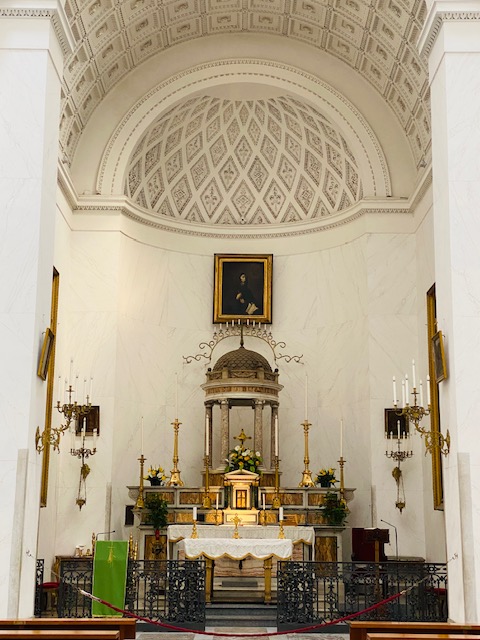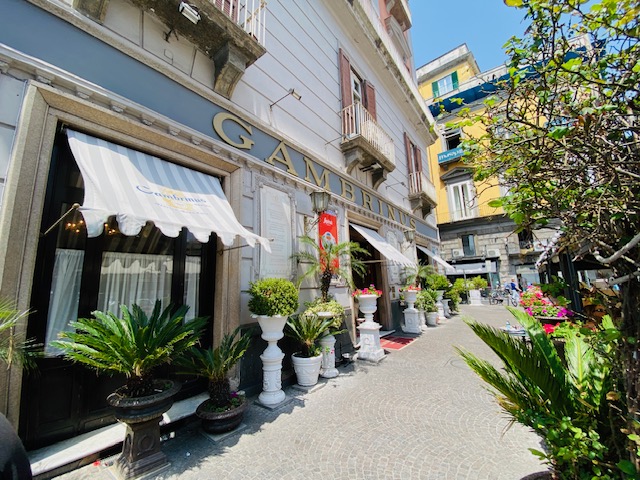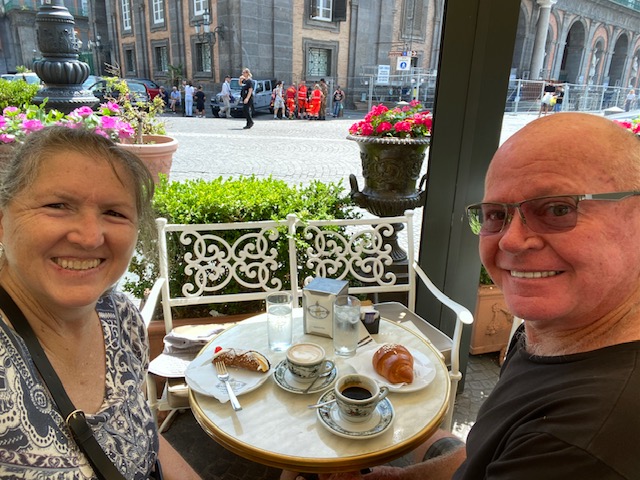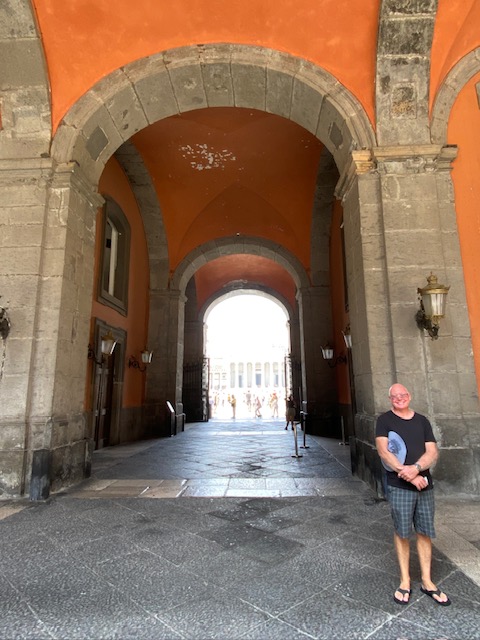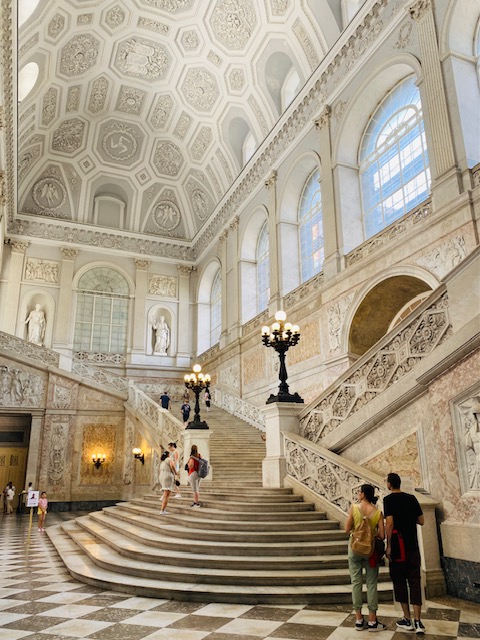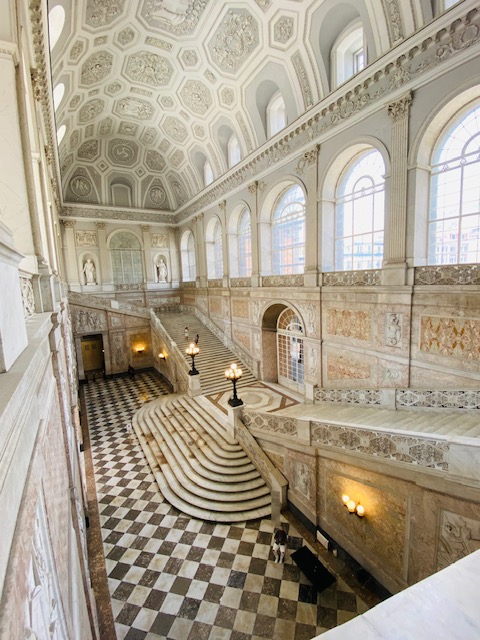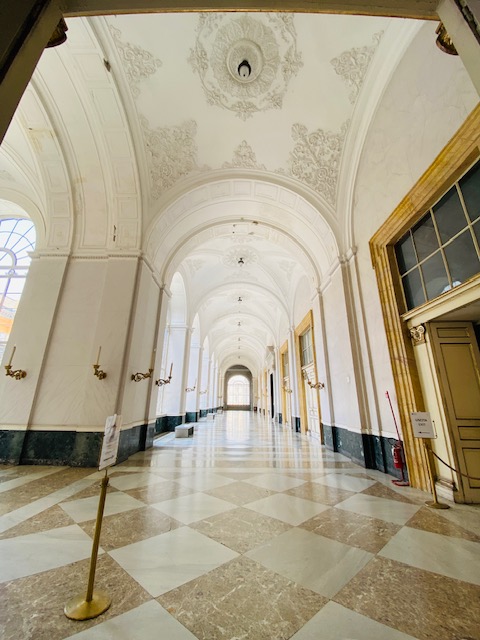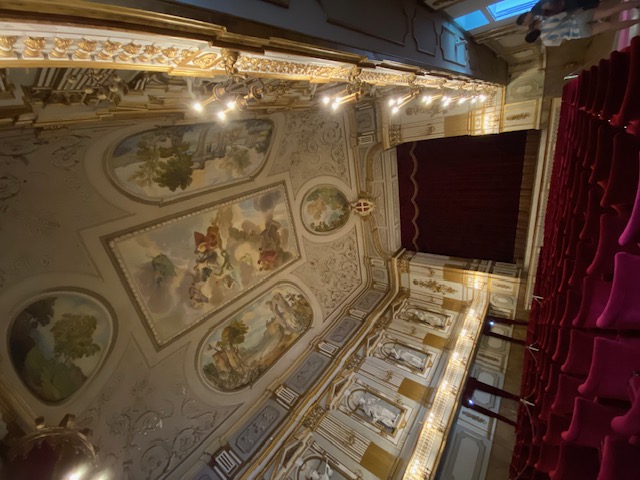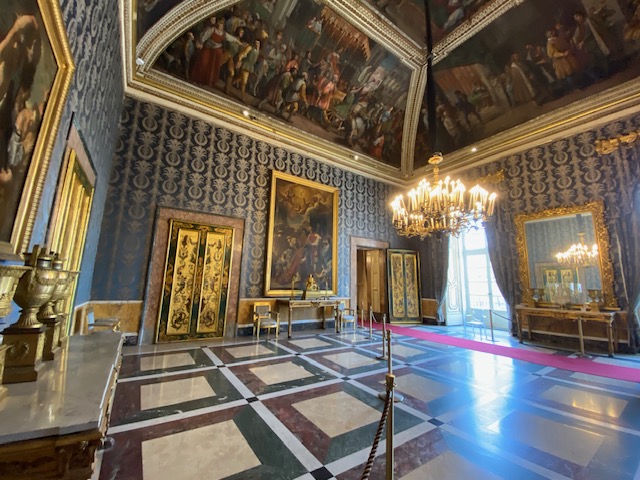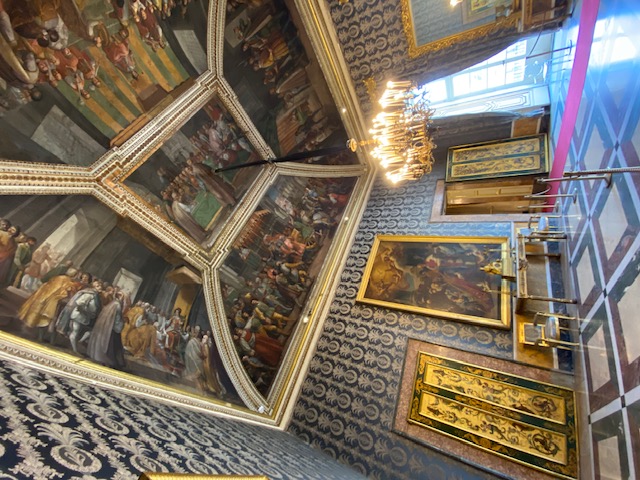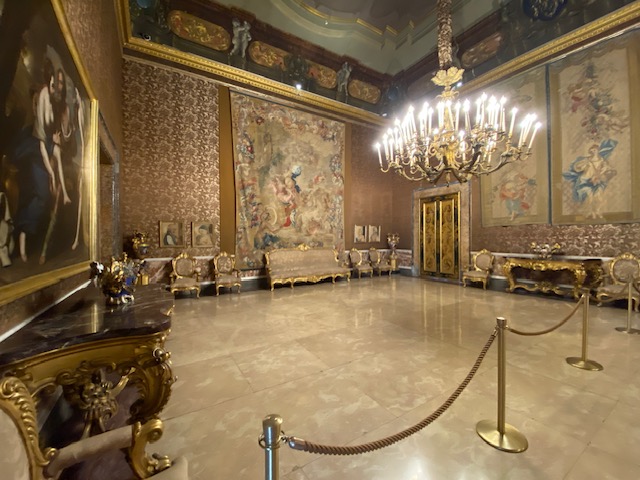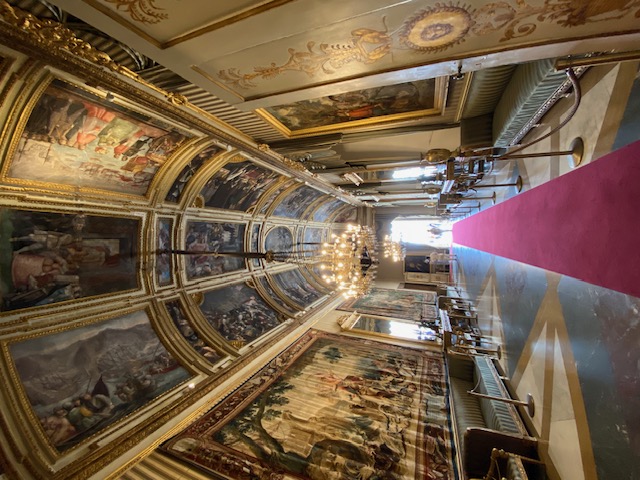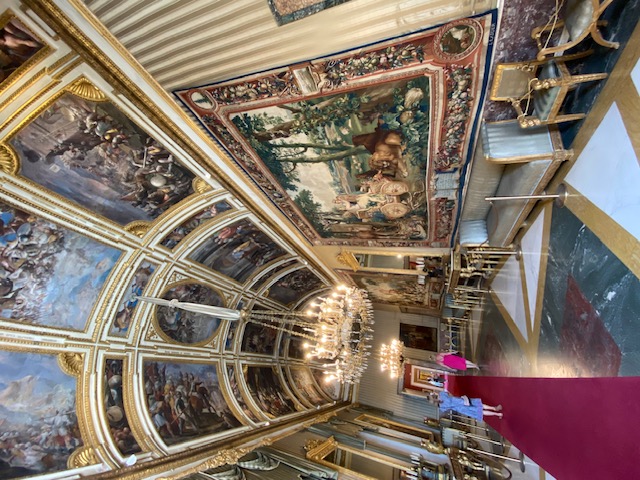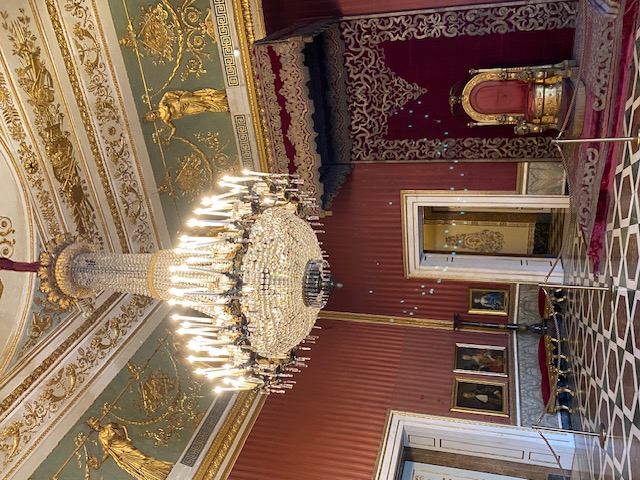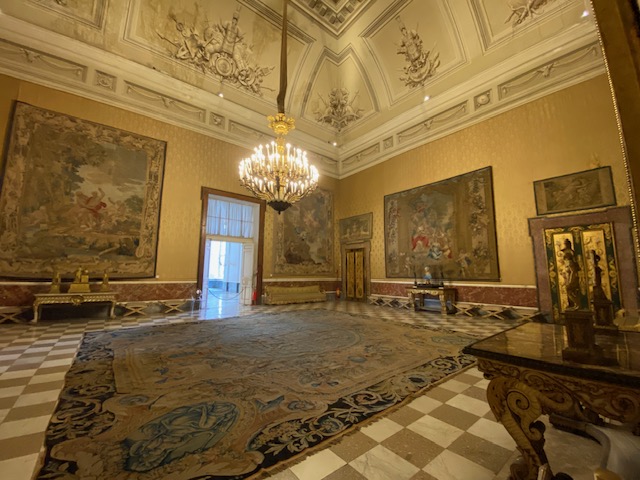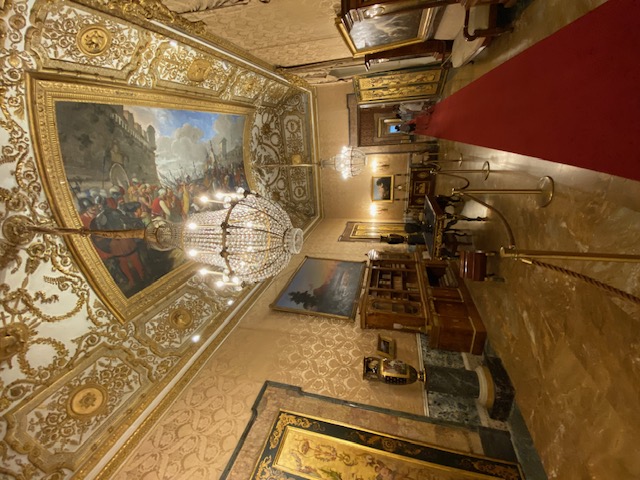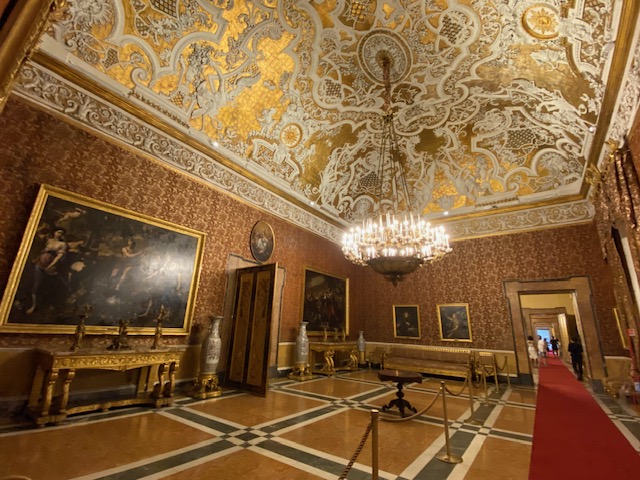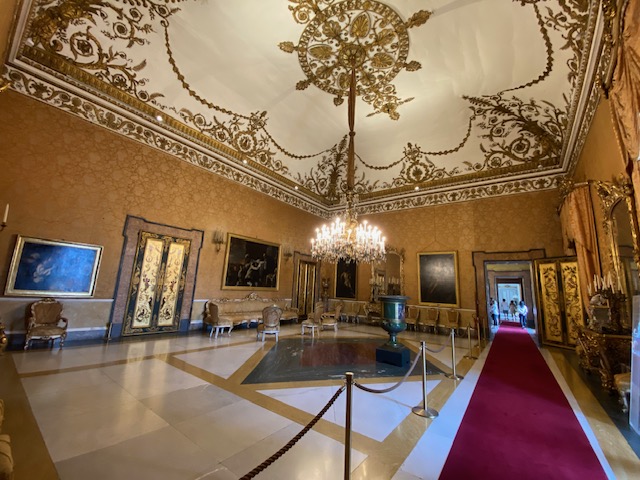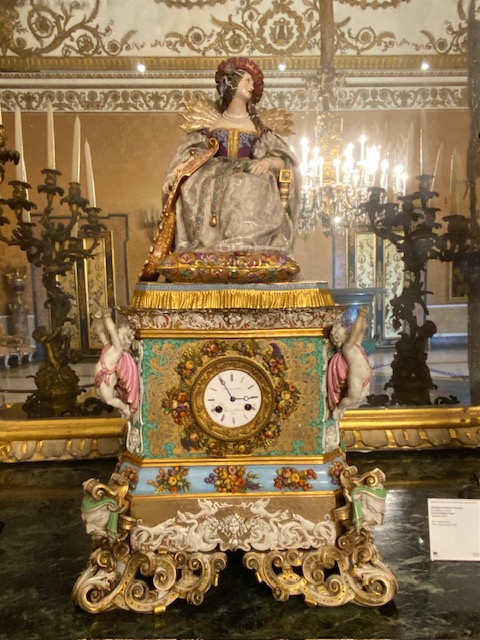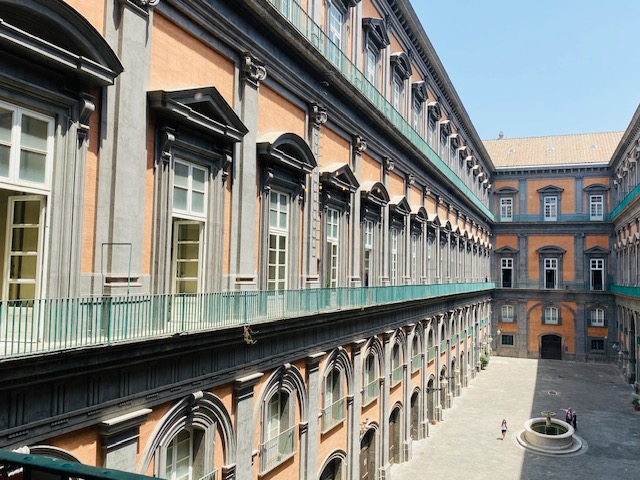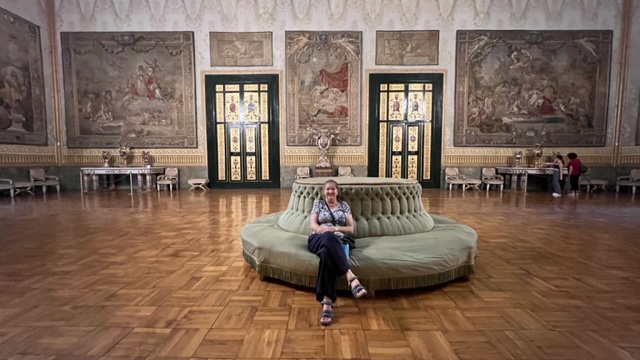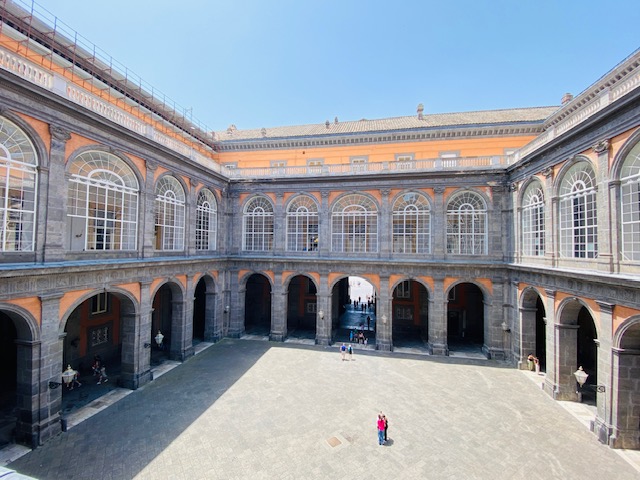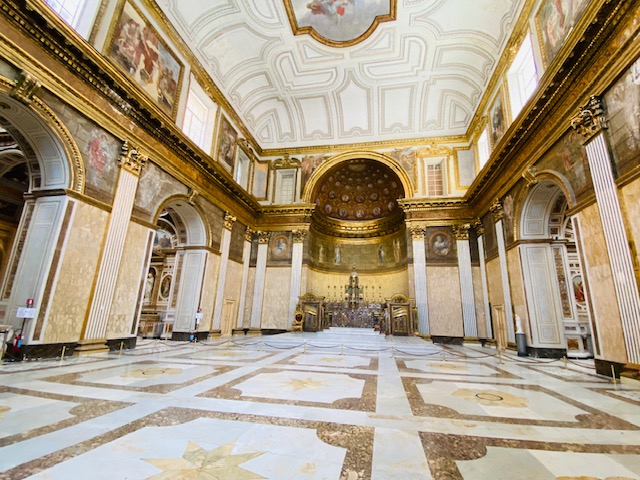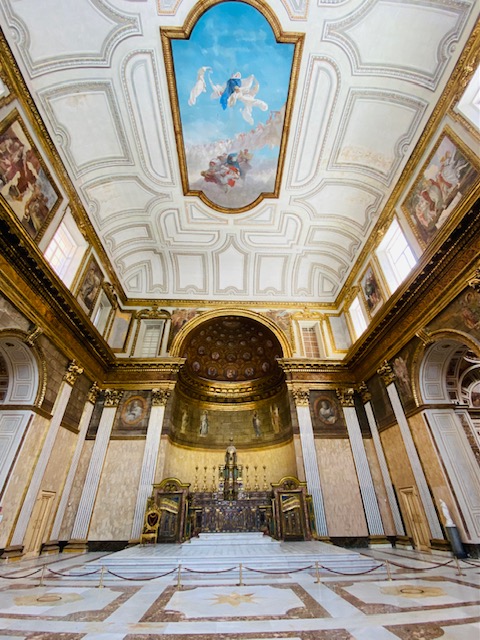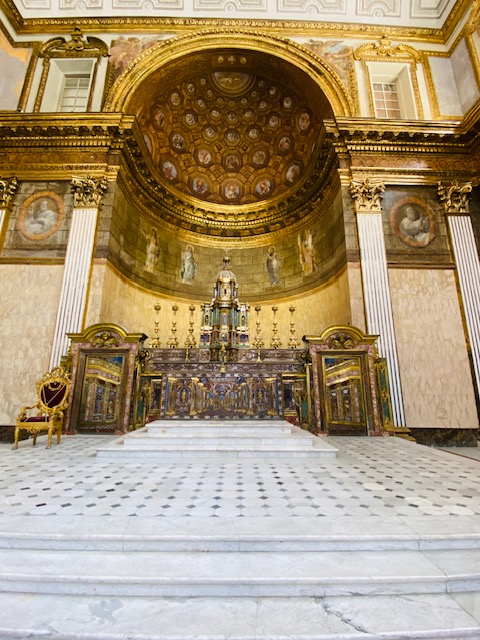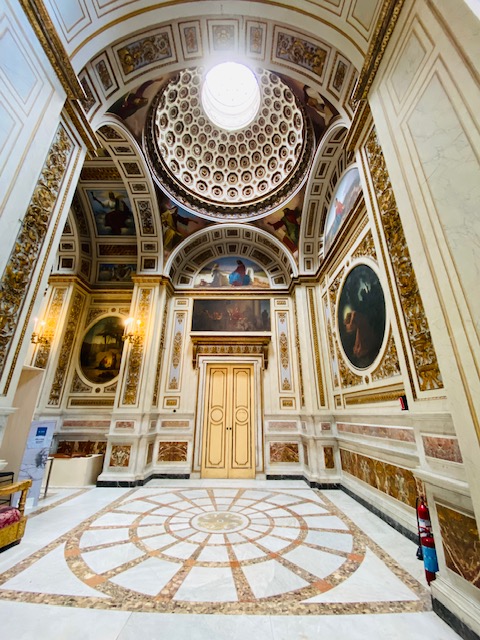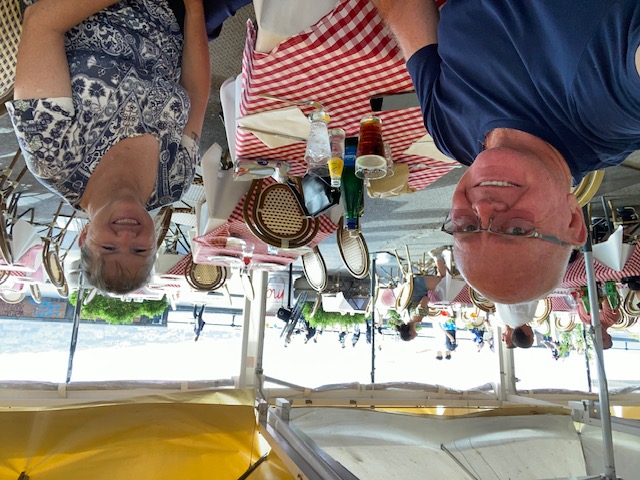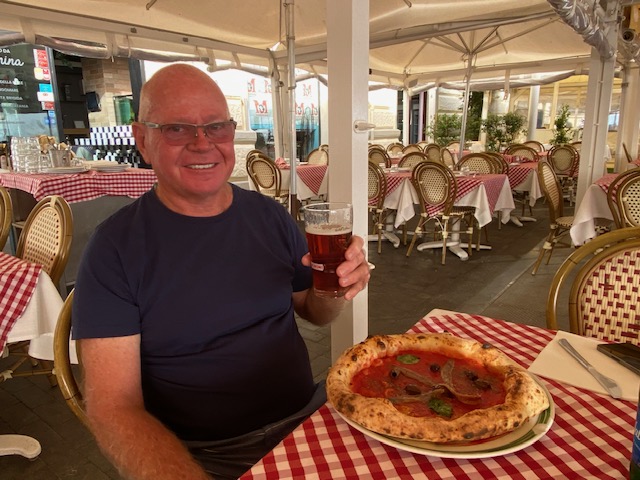After breakfast onboard we dinghied ashore, passing under the causeway bridge of “Castel del’Ova” (Ovo Castle), which we could see from our anchorage and into Porto Saint Lucia, where we secured the dinghy at the 129 year old exclusive “Reale Yacht Club Canottieri Savoia”, then walked along the waterfront to “Piazza del Plebiscito”, the main city square, but google took us on a wild goose chase, in sweltering heat, before we actually found it. However, this allowed us to see “Fontana del Gigante”, “Statua di Augusto” and Litoranea Park along the way.
The piazzo was enormous, dominated by the neoclassical-style “Basilica Reale Pontificia San Francesco da Paola” (Church of San Francesco di Paola), with its hallmark twin colonnades extending to each side, located on the western side of the piazzo and one of the most unusual Roman Catholic churches we’ve seen during our circumnavigation.
Research revealed that Joachim Murat, Napoleon’s brother-in-law, planned the entire square and the large building with the colonnades, in the 19th Century, as a tribute to the emperor. When Napoleon was dispatched, the Bourbons were restored to the throne of Naples and Ferdinand I finished the construction in 1816, but modified it to represent what is seen today. He dedicated the church to Saint Francis of Paola, who lived in a monastery located on the same site during the 16th Century.
The church is reminiscent of the Pantheon in Rome. The façade is fronted by a portico resting on six columns and two Ionic pillars. Inside, the church is circular with two smaller domed side chapels and a centre dome at a height of 53 metres / 174 ft.
In front of the church were the statues, “Statua Equestre di Carlo III” and “Statua Equestre di Ferdinand I” and on the eastern end, “Palazzo Reale di Napoli” (Royal Palace of Naples), the latter explored after we’d enjoyed a coffee and baked delight at the iconic “Gran Caffè Gambrinus”, regarded as the “society-hall of Naples” for more than 150 years and where Elaine eventually got to eat a “cannoli“. Delicious!
Since the Italian Unification, Heads of State, politicians, intellectuals and tourists alike have visited the renowned caffè, including Oscar Wilde, Ernest Hemingway, Sigmund Freud, Luciano Pavarotti and Angela Merkel. Every year, on New Year's Day the President of the Italian Republic enjoys breakfast there.
Visiting “Palazzo Reale di Napoli” was another wonderful surprise, given that the Royal Apartments have been beautifully restored.
It was one of the four residences near Naples used by the House of Bourbon during their rule of the Kingdom of Naples from 1735 to 1816 and later the Kingdom of the Two Sicilies from 1816 to 1861.
Construction on the present building began in the 17th Century and was intended to house King Philip III of Spain on a visit which never happened. Instead it housed various other members of royalty, including Charles III of Spain, when the palace became the royal residence of the Bourbons.
The facade was completed by 1616 and the beautiful interior frescoes by 1620. However, the decoration of the “Cappella Reale dell'Assunta” (Royal Chapel of the Assumption) wasn’t completed until 1644.
In 1837, after centuries of alterations, re-modelling, additions and modernisations, a fire damaged many rooms and required restoration from 1838 to 1858. Further restorations were required after parts of the building were bombed during World War II and the subsequent military occupation caused additional serious damage.
Today, the palace and adjacent grounds house the famous “Teatro San Cario”, the smaller “Teatrino di Corte”, the “Biblioteca Nazionale Vittorio Emanuele III”, the museum of the restored Royal Apartments and offices, including those of the regional tourist board.
Satisfied that we’d enjoyed the highlights of “Napoli”, we returned to Paw Paw, but not before completing a quick provisioning trip to a local supermarket.
After a late afternoon nap, we dinghied back ashore to enjoy dinner at Mammina Napoli on the waterfront, where Roy had his long anticipated Napolitano pizza and Elaine decided on the scrumptious Mammina Special pizza, since she doesn’t like anchovies. This was followed by a gelato from Desìo Gelato & Pastry, before retiring for the night.
Back on Paw Paw, we made the difficult, but prudent decision, to skip our tour of Pompeii and Mount Vesuvius after Elaine’s minor medical incident, brought on by the sudden increase in temperatures we’ve experienced and that occurred as we were leaving the “Basilica Reale Pontificia San Francesco da Paola”. Besides being extremely embarrassed, we were pleased to learn there was nothing obscure or sinister going on, but we would like to extend our thanks to all the very kind folks who helped; the lady who gave Elaine her bottle of water, the gentleman who helped Roy get Elaine back into the coolness of the church, the gentleman who gave Elaine sugary sweets to suck, the doctor and his wife, visiting from Sicily, who rendered assistance and the efficient paramedics who arrived in a flash on a motorcycle. We would would also like to extend our thanks to the “Reale Yacht Club Canottieri Savoia” that allowed us to leave our dinghy on their dock and afforded us the opportunity to explore “Napoli”.
